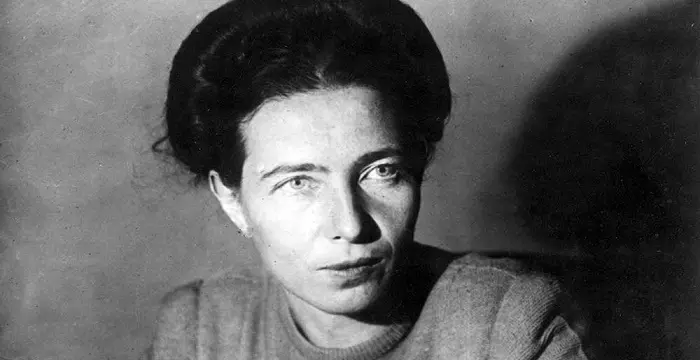
Marquis de Sade - Erotic Novelist, Life Achievements and Childhood
Marquis de Sade's Personal Details
Marquis de Sade was a French nobleman and an erotic novel writer
| Information | Detail |
|---|---|
| Birthday | June 2, 1740 |
| Died on | December 2, 1814 |
| Nationality | French |
| Famous | Atheists, Writers, Novelists, ESTP, Erotic Novelist |
| City/State | Paris |
| Spouses | Renee Pelagie de Sade |
| Known as | Donatien Alphonse François de Sade |
| Childrens | Donatien Claude Armand de Sade, Louis Marie de Sade, Madeline Laure de Sade |
| Universities |
|
| Birth Place | Paris |
| Gender | Male |
| Father | Jean-Baptiste-François-Joseph de Sade |
| Mother | Marie-Eleonore |
| Sun Sign | Gemini |
| Born in | Paris |
| Famous as | Erotic Novelist |
| Died at Age | 74 |
Marquis de Sade's photo
Who is Marquis de Sade?
Marquis de Sade was a French nobleman and an erotic novel writer. He wrote several novels, short stories, essays, plays, and other pieces of literature. Throughout his life he repeatedly committed severe sexual offences, for which he was imprisoned several times. He was even sentenced to death but somehow escaped. Eventually he was declared insane and sent to an asylum where he later died. Sade’s perverse sexual preferences and erotic writings gave rise to the term ‘sadism’. His books were never allowed to be published; hence he published several of his works anonymously. After his death, his descendants regarded his life and works as scandalous till the mid-twentieth century. But in late 1940s, Comte Xavier de Sade, one of his descendants, took interest in his ancestor's writings. He, and later his son, found some manuscripts. Critics have for long debated whether his novels have any redeeming value. Numerous writers have severely criticized Sade while some have hailed him as a literary hero. Michael Onfray, a contemporary French writer and philosopher, said, "It is intellectually bizarre to make Sade a hero... this man was a sexual delinquent".
// Famous ESTP
Megan Fox
Megan Fox is a popular American actress and model. This biography provides detailed information about her childhood, life, career, works, achievements, timeline, and trivia.
Meryl Streep
Meryl Streep is one of the most talented actors of the modern era. She has played the most real-life characters in the history of cinema. Check this biography to get details about her life, profile & timeline.
Jack Nicholson
John Joseph "Jack" Nicholson is an American actor and filmmaker. This biography profiles his childhood, life, film career, achievements and timeline.
Childhood & Early Life
Donatien Alphonse François, Marquis de Sade was born on June 2, 1740, in Paris. His father, Jean Baptiste François Joseph was a diplomat in the court of Louis XV, and his mother, Marie Eléonore de Maillé de Carman, was a cousin and lady-in-waiting to the Princess of Condé. When he was a child, his father abandoned his mother, who took refuge in a convent.
He was his parents' only child, and was educated by his uncle. From childhood, he was rebellious and had a bad temper.
He attended Lycée Louis-le-Grand, a Jesuit college, in Paris for four years. There Abbé Jacques-François Amblet, a priest, tutored him. At school he received "severe corporal punishments," including flogging for repeated misdeeds.
When he was 14, he attended an elite military academy, and at 15, he was commissioned as a sub-lieutenant. He eventually became Colonel of a Dragoon regiment and fought in the Seven Years' War.
Later Years
Marquis de Sade often indulged in sexual brutalities against women, which inspired his pornographic writings. He was once forced to flee to Italy due to his sexual offences, and during that time he wrote ‘Voyage d'Italie’.
He was also often imprisoned for his sexual misconduct. While in prison, he started writing erotic works. He wrote a dialogue ‘Dialogue entre un prêtre et un moribond’ (Dialogue Between a Priest and a Dying Man) in 1782, while he was at Château de Vincennes. It was first published in 1926.
He wrote ‘Aline et Valcour; ou, Le Roman Philosophique’ when he was incarcerated in Bastille in the 1780s. The novel contrasts a brutal African kingdom with a South Pacific island paradise. It was published in 1795, his first book to be published under his true name.
In 1785, he wrote his infamous novel ‘Les 120 Journées de Sodome’ (The 120 Days of Sodom). Described as pornographic and erotic, it told the story of four wealthy male libertines who decide to experience sexual gratification in orgies. It was first published in 1904.
In 1790, during the French Revolution, he published several of his books anonymously. After The French Revolution in 1799, he supported the Republic, and served in several official positions. He was elected to the National Convention, and was a member of the Piques section, known for its radical views. He supported implementation of direct vote.
Marquis de Sade wrote ‘Justine, ou Les Malheurs de la Vertu’ (Justine, or The Misfortunes of Virtue) in 1791. It was the story of a young woman who recounts her tale while defending herself for the crimes she had committed, after being sentenced to death.
He opposed the Reign of Terror in 1793, and was critical of French politician Maximilien Robespierre. Eventually, he was removed from his posts due to "moderatism", and was imprisoned for a year.
His novel ‘Juliette’ was published in 1797. It told the story of Juliette, the sister of Justine (his book ‘Justine’s’ lead character), who, despite being a nymphomaniac murderer, was successful and happy.
In 1801, Napoleon Bonaparte ordered his arrest for the books ‘Justine’ and ‘Juliette’. Sade was then arrested and imprisoned without trial. Sade’s opinions on sexual violence, sadism, and pedophilia shocked even his contemporaries who were familiar with the dark themes of Gothic novels in the late 18th century.
Major Work
'La philosophie dans le boudoir’ (Philosophy in the Boudoir) is a 1795 book by Sade written in the form of a dramatic dialogue. Although initially it was seen as a work of pornography, the book was later considered to be a socio-political drama. In a bedroom, the two lead characters discuss that the only moral system that can reinforce French political revolution is libertinism, and if France fails to adopt the libertine philosophy, it will return to be a monarchic state.
Personal Life
Marquis de Sade lived a scandalous libertine life, and repeatedly indulged in severe sexual offences. He was also charged with blasphemy, a serious offense at that time, and was imprisoned several times for committing sexual brutalities against women.
In 1763, he expressed his wish to marry a rich magistrate's daughter, but her father rejected the proposal, and instead arranged his marriage with his elder daughter, Renée-Pélagie de Montreuil. The couple had two sons and a daughter.
After several imprisonments, he was exiled to his castle in Lacoste in 1768. In 1772, after an incident of non-lethal incapacitating of women with aphrodisiac Spanish fly and sodomizing a man, Sade was sentenced to death. He fled to Italy, taking his wife's sister with him. He was caught and imprisoned, but escaped after four months.
In 1789, when he was in Bastille prison, he shouted from his cell to the crowd outside that the prisoners are being killed, which was followed by a disturbance.Two days later, he was sent to the insane asylum at Charenton.
In 1790, after his release from Charenton, his wife obtained a divorce. Thereafter, Sade stayed with Marie-Constance Quesnet, an actress, who had been abandoned by her husband. Sade eventually became so poor that he had to sell his ruined Lacoste castle in 1796.
He was declared insane in 1803 and sent to Charenton Asylum. The director of the asylum, Abbé de Coulmier, allowed him to stage his plays, with the inmates as actors. In 1809, Sade was put into solitary confinement and was deprived of pens and papers. The government ordered all theatrical performances in the asylum to be suspended in 1813.
He died on December 2, 1814. After his death, his son burned all his unpublished manuscripts, including the multi-volume work ‘Les Journées de Florbelle’.
Sade had written in his will that his body should not be opened for any reason, and that it should remain untouched for 48 hours in the chamber where he died, and then placed in a coffin and buried on his property in Malmaison. However, none of these instructions were followed. In fact, he was buried at Charenton, and later his skull was removed from the grave for phrenological examination.
// Famous Writers
Joyce Meyer
Joyce Meyer is a Christian author and speaker. This biography provides detailed information about her childhood, life, achievements, works & timeline
Temple Grandin
Temple Grandin is a well-known American writer, autistic activist and animal expert. This biography profiles her childhood, life, achievements, career and timeline
Tennessee Williams
Tennessee Williams was one of the greatest playwrights of the 20th century. This biography of Tennessee Williams provides detailed information about his childhood, life, achievements, works and timeline.
Marquis de Sade biography timelines
- // 2nd Jun 1740Donatien Alphonse François, Marquis de Sade was born on June 2, 1740, in Paris. His father, Jean Baptiste François Joseph was a diplomat in the court of Louis XV, and his mother, Marie Eléonore de Maillé de Carman, was a cousin and lady-in-waiting to the Princess of Condé. When he was a child, his father abandoned his mother, who took refuge in a convent.
- // 1763In 1763, he expressed his wish to marry a rich magistrate's daughter, but her father rejected the proposal, and instead arranged his marriage with his elder daughter, Renée-Pélagie de Montreuil. The couple had two sons and a daughter.
- // 1772After several imprisonments, he was exiled to his castle in Lacoste in 1768. In 1772, after an incident of non-lethal incapacitating of women with aphrodisiac Spanish fly and sodomizing a man, Sade was sentenced to death. He fled to Italy, taking his wife's sister with him. He was caught and imprisoned, but escaped after four months.
- // 1782He was also often imprisoned for his sexual misconduct. While in prison, he started writing erotic works. He wrote a dialogue ‘Dialogue entre un prêtre et un moribond’ (Dialogue Between a Priest and a Dying Man) in 1782, while he was at Château de Vincennes. It was first published in 1926.
- // 1785In 1785, he wrote his infamous novel ‘Les 120 Journées de Sodome’ (The 120 Days of Sodom). Described as pornographic and erotic, it told the story of four wealthy male libertines who decide to experience sexual gratification in orgies. It was first published in 1904.
- // 1789In 1789, when he was in Bastille prison, he shouted from his cell to the crowd outside that the prisoners are being killed, which was followed by a disturbance.Two days later, he was sent to the insane asylum at Charenton.
- // 1790In 1790, during the French Revolution, he published several of his books anonymously. After The French Revolution in 1799, he supported the Republic, and served in several official positions. He was elected to the National Convention, and was a member of the Piques section, known for its radical views. He supported implementation of direct vote.
- // 1790In 1790, after his release from Charenton, his wife obtained a divorce. Thereafter, Sade stayed with Marie-Constance Quesnet, an actress, who had been abandoned by her husband. Sade eventually became so poor that he had to sell his ruined Lacoste castle in 1796.
- // 1793He opposed the Reign of Terror in 1793, and was critical of French politician Maximilien Robespierre. Eventually, he was removed from his posts due to "moderatism", and was imprisoned for a year.
- // 1795'La philosophie dans le boudoir’ (Philosophy in the Boudoir) is a 1795 book by Sade written in the form of a dramatic dialogue. Although initially it was seen as a work of pornography, the book was later considered to be a socio-political drama. In a bedroom, the two lead characters discuss that the only moral system that can reinforce French political revolution is libertinism, and if France fails to adopt the libertine philosophy, it will return to be a monarchic state.
- // 1797His novel ‘Juliette’ was published in 1797. It told the story of Juliette, the sister of Justine (his book ‘Justine’s’ lead character), who, despite being a nymphomaniac murderer, was successful and happy.
- // 1801In 1801, Napoleon Bonaparte ordered his arrest for the books ‘Justine’ and ‘Juliette’. Sade was then arrested and imprisoned without trial. Sade’s opinions on sexual violence, sadism, and pedophilia shocked even his contemporaries who were familiar with the dark themes of Gothic novels in the late 18th century.
- // 1803He was declared insane in 1803 and sent to Charenton Asylum. The director of the asylum, Abbé de Coulmier, allowed him to stage his plays, with the inmates as actors. In 1809, Sade was put into solitary confinement and was deprived of pens and papers. The government ordered all theatrical performances in the asylum to be suspended in 1813.
- // 2nd Dec 1814He died on December 2, 1814. After his death, his son burned all his unpublished manuscripts, including the multi-volume work ‘Les Journées de Florbelle’.
// Famous Atheists
Morgan Freeman
Morgan Freeman is an Academy Award winning actor known for his work in movies like ‘Street Smart’, ‘Driving Miss Daisy’ and ‘Million Dollar Baby’. This biography provides detailed information about his childhood, life, achievements, works & timeline.
Robert Smith
Robert Smith is an English musician and the lead singer of the British rock band, ‘The Cure.’ This biography of Robert Smith gives detailed information on his profile, childhood, life and timeline.
Jack Black
Jack Black is a renowned American actor-producer and voice artist. Explore this biography to learn more about his profile, childhood, career and timeline
Stanley Kubrick
Stanley Kubrick was a screenwriter and film director known for his movies like ‘The Clockwork Orange’ and ‘The Shining’. This biography of Stanley Kubrick provides detailed information about his childhood, life, achievements, works & timeline.
Stephen Fry
Stephen Fry is a comedian, actor, author, television and radio presenter. Read the biography and know all about his childhood, career, profile and timeline.
Simone de Beauvoir
Simone de Beauvoir was an eminent French writer, intellectual, activist, and philosopher. This biography profiles her childhood, life, thoughts, achievements and timeline.
Marquis de Sade's FAQ
What is Marquis de Sade birthday?
Marquis de Sade was born at 1740-06-02
When was Marquis de Sade died?
Marquis de Sade was died at 1814-12-02
Where was Marquis de Sade died?
Marquis de Sade was died in Saint-Maurice
Which age was Marquis de Sade died?
Marquis de Sade was died at age 74
Where is Marquis de Sade's birth place?
Marquis de Sade was born in Paris
What is Marquis de Sade nationalities?
Marquis de Sade's nationalities is French
Who is Marquis de Sade spouses?
Marquis de Sade's spouses is Renee Pelagie de Sade
Who is Marquis de Sade childrens?
Marquis de Sade's childrens is Donatien Claude Armand de Sade, Louis Marie de Sade, Madeline Laure de Sade
What was Marquis de Sade universities?
Marquis de Sade studied at Lycée Louis-le-Grand
Who is Marquis de Sade's father?
Marquis de Sade's father is Jean-Baptiste-François-Joseph de Sade
Who is Marquis de Sade's mother?
Marquis de Sade's mother is Marie-Eleonore
What is Marquis de Sade's sun sign?
Marquis de Sade is Gemini
How famous is Marquis de Sade?
Marquis de Sade is famouse as Erotic Novelist












